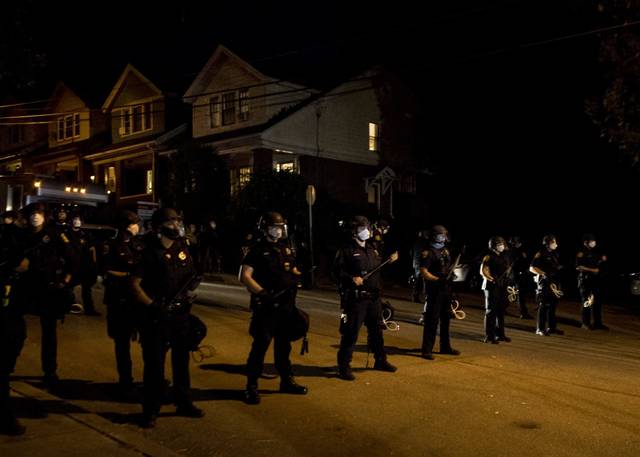Editorial: Keep protests out of residential areas
Protests are staged where people feel they will do the most good. That seldom means they happen where they are the most convenient.
If workers go on strike, they make their situation known outside the building, making a visible symbol of their opposition to the management.
When people bring their opposition to Washington, they assemble where the crowds will gain the most attention and where they will bring that attention to their issues, like the Capitol or the Supreme Court.
Amid recent protests nationwide that started with the death of George Floyd in a confrontation with Minneapolis police, gatherings have happened at courthouses and in downtowns and intersections. And increasingly, they are being brought home for city leaders.
The Wall Street Journal has documented the way protesters have begun taking their grievances to the mayors’ front doors. From Ted Wheeler in Portland, Ore., to Seattle’s Jenny Durkan to Chicago’s Lori Lightfoot to San Jose, Calif.’s Sam Liccardo to Los Angeles’s Eric Garcetti and more.
And Pittsburgh Mayor Bill Peduto could be on that list.
Around 9 p.m. Saturday, protesters began to gather outside the mayor’s home. It isn’t the first time. After a dramatic white-van arrest of a protester in August that was meant to be “low visibility,” crowds assembled for days.
There have been confrontations between police and protesters. While no arrests were reported Saturday, the previous protests have included clashes that ended in pepper spray and handcuffs.
The interesting part of the protests in Pittsburgh and other cities is that the opposition to police behavior and city policies is being raised against Democratic mayors — many of whom have voiced support of the protesters’ positions.
“Together, we work w/ our Black Community to reimagine policing in our city. Pittsburgh remains open to any & all ideas to work together to create a better city,” Peduto said on his Twitter account Saturday night.
Peduto also responded promptly to the August arrest, expressing his discomfort with the way it was conducted and calling the action “disturbing.”
The Pittsburgh protests are still a far cry from the vandalism and fire employed at Wheeler’s home in Portland or the fireworks and paintball guns shot at Oakland, Calif., Mayor Libby Schaaf’s home.
“It feels a little Twilight Zoney that many of us got into public service because we wanted to fight the man. Now we are deemed as the man,” Schaaf told The Wall Street Journal.
Protests that follow leaders home have the potential of becoming more dangerous because residential streets aren’t set up for the same crowds. The families of elected officials can be caught up in it, as can neighbors who never had a choice in the guy next door deciding to run for office.
Peduto has faced social media criticism for the police presence at his home amid the protests. He responded that it was due to threats and attempts by some to get through the front door.
“Same protection that would be given to any resident under similar threats,” he said on Twitter.
Mayors like Peduto have to find a way to talk to protesters so they will not just hear but accept. Not just for the safety of their cities but for their neighbors and their own homes.
And the protesters have to remember that their message is for the halls of power, not the next-door neighbors.
Remove the ads from your TribLIVE reading experience but still support the journalists who create the content with TribLIVE Ad-Free.

